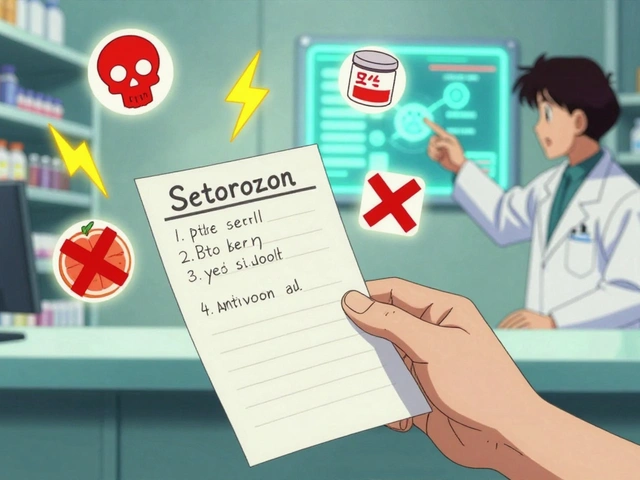Understanding Lithium Battery Regulations
As someone who works closely with lithium batteries, I've come to understand the importance of safety regulations and certifications. These guidelines are not just a bureaucratic hurdle, but a set of rules designed to ensure the safe handling, transportation, and disposal of these powerful and potentially dangerous power sources. Let's delve into the world of lithium battery regulations to understand why they are so crucial.
Why Lithium Battery Safety Standards Matter
You might wonder, why do we need specific safety standards for lithium batteries? The answer lies in their chemical makeup. Lithium batteries are energy-dense, which makes them highly efficient but also potentially volatile. If mishandled or improperly manufactured, they can cause fires or explosions. Therefore, strict safety standards are put in place to minimize these risks and ensure the safe production, use, and disposal of lithium batteries.
Key Lithium Battery Safety Standards
There are several key safety standards that manufacturers and users of lithium batteries must adhere to. For example, the International Electrotechnical Commission (IEC) has established a series of standards known as IEC 62133. These guidelines cover the safety aspects of both rechargeable and non-rechargeable lithium batteries. In addition, many countries have their own specific requirements, such as the United States' UL 2054 standard and Europe's EN 62133 standard.
Understanding Lithium Battery Certification Process
Obtaining certification for lithium batteries is not a simple process. It involves rigorous testing and inspection by a recognized body to ensure that the batteries meet all relevant safety standards. The certification process typically involves various tests, including those for temperature, short-circuit, impact, overcharge, and forced discharge. Only after passing these tests can a lithium battery be certified as safe for use.
Importance of Compliance with Lithium Battery Regulations
Compliance with lithium battery regulations is not just a legal requirement, but also a matter of corporate responsibility. By adhering to these standards, companies not only protect themselves from legal repercussions but also contribute to the overall safety of their customers and the environment. Non-compliance can lead to severe penalties, including fines and even imprisonment in certain cases, so it's in everyone's best interest to take these regulations seriously.
Staying Updated with Lithium Battery Regulations
Given the rapid advancements in battery technology, it's essential to stay updated with the latest lithium battery regulations. Regulatory agencies often update their guidelines to accommodate new developments and findings. Fortunately, there are resources available to help keep track of these changes, such as the Battery Association of Japan and the Portable Rechargeable Battery Association in the United States.
Conclusion: Safety is Paramount in Lithium Batteries
As we've seen, lithium battery regulations are a vital aspect of ensuring the safe use of this essential technology. By understanding and adhering to these standards, we can all contribute to a safer and more sustainable future. Be it as manufacturers, distributors, or consumers, we all have a part to play in promoting the safe use of lithium batteries.









13 Comments
Benjamin Cook
Jun 27 2023Got to love how these regs keep us from turning our phones into fireworks!!! Safety first, bro, and those extra exclamation points just show how pumped I am about compliance!!!
karthik rao
Jul 6 2023While the prior comment enthuses about safety, it neglects the nuanced distinction between IEC 62133 and UL 2054, which are not interchangeable. The former addresses portable devices globally, whereas the latter focuses on household battery systems in the United States. Overlooking such differences can lead to non‑compliant products despite good intentions. It is essential to reference the exact standard applicable to your market before proceeding. 😊
Breanne McNitt
Jul 14 2023Totally agree-following standards isn’t just paperwork, it’s a real shield for users. When manufacturers test for short‑circuit and over‑charge scenarios, we all sleep better at night. Let’s keep pushing for transparent reporting on test results.
Ashika Amirta varsha Balasubramanian
Jul 22 2023Safety in energy storage reflects a broader societal contract; when we honor regulations, we honor each other's well‑being. The philosophical underpinning is that technology should serve humanity, not jeopardize it. Embracing standards is therefore an act of collective responsibility, not a burdensome hurdle.
Jacqueline von Zwehl
Jul 30 2023The standards mentioned are geographically diverse, yet their core principles converge. Consistency across regions helps global supply chains stay compliant without reinventing the wheel each time.
Christopher Ellis
Aug 8 2023Understanding the certification process starts with recognizing that batteries are not mere components but complex chemical systems. The IEC 62133 standard outlines requirements for both rechargeable and non‑rechargeable cells, emphasizing protection against over‑voltage, short‑circuit, and mechanical abuse. In the United States, UL 2054 adds additional criteria focused on fire safety for household use. Europe’s EN 62133 mirrors IEC but incorporates region‑specific testing methods, such as drop tests from a defined height onto concrete. Each of these standards mandates a series of rigorous examinations: thermal runaway simulations, forced discharge cycles, and impact resistance trials.
Compliance officers must compile a detailed test plan, submit sample units to accredited labs, and await a certification report indicating pass/fail outcomes. If a battery fails any test, manufacturers are required to redesign the cell architecture, adjust electrolyte composition, or incorporate additional safety circuitry. Once all criteria are satisfied, a certification mark can be affixed, signaling that the product meets the relevant safety benchmarks.
Beyond the lab, transportation regulations under IATA IAST‑M2 dictate packaging, labeling, and handling for bulk shipments. Failure to adhere to these can result in fines, shipment delays, or even bans from international markets. Disposal guidelines, such as those from the EU Battery Directive, compel manufacturers to establish take‑back programs and ensure environmentally responsible recycling.
In practice, compliance is a continuous journey. Regulatory bodies periodically update standards to address emerging technologies like solid‑state batteries or high‑energy‑density cells. Companies that invest in proactive monitoring of these updates avoid costly retrofits and maintain market access. Moreover, transparent communication with consumers-providing safety data sheets and clear usage instructions-reinforces trust and mitigates misuse.
Ultimately, the rigorous certification and compliance framework protects end‑users from catastrophic failures while fostering innovation within safe boundaries.
kathy v
Aug 16 2023Regulatory oversight is not a mere bureaucratic exercise; it’s the backbone of national safety culture. When we dismiss standards as red tape, we ignore the hard‑won lessons from past battery fires that devastated entire supply chains. The long‑term stability of the industry depends on stringent testing and transparent reporting. Moreover, each jurisdiction’s unique requirements reflect local risk assessments, so a one‑size‑fits‑all approach simply won’t cut it. By embracing these mandates, manufacturers demonstrate a commitment not only to legal compliance but also to consumer confidence. In the end, safety standards and certifications act as a shield that protects both the public and the reputation of the companies that honor them.
Jorge Hernandez
Aug 24 2023Never skip the certification step!
Raina Purnama
Sep 1 2023Skipping leads to costly recalls later.
April Yslava
Sep 10 2023Regulatory bodies constantly evolve, so staying updated feels like chasing a moving target. New chemistries and higher energy densities force agencies to rewrite testing protocols. Ignoring these updates can result in non‑compliance penalties that cripple small manufacturers. It’s wise to subscribe to industry newsletters and participate in standards committees if possible. That way, you’re not blindsided by a sudden rule change.
Daryl Foran
Sep 18 2023Some claim the rules stifle innovation, yet history shows safety failures often spur breakthroughs. When a fire incident occurred, manufacturers responded with better thermal management solutions. So constraints can actually drive smarter design.
Rebecca Bissett
Sep 26 2023This is why we must care!!!
Michael Dion
Oct 4 2023Agree.